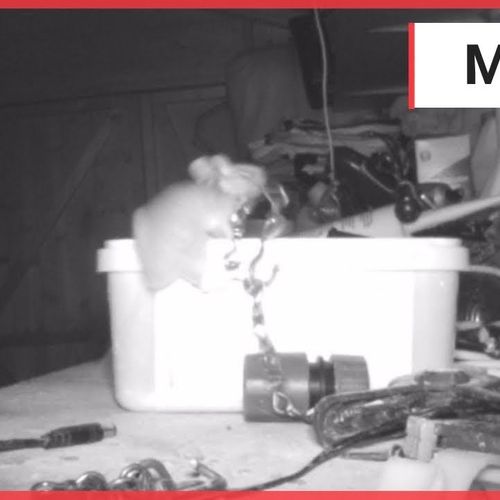
| Added | Wed, 20/09/2017 |
| Hierarchy | |
| Другие названия | The Brownie
Grandfather
Fast
Slime
The house is alive
Owner
Zhirovik
Susedko
Bro
The Guardian Spirit
The abuser is at home
The baking dish
Podpechnik
The Underground
Golbeshnik
Izbyanaya bolshak
Oppressive
Gnetka
The oppressor
Modoveyko
Gurkalo
Press
|
| Область распространения | Russia
Belarus
Ukraine
Czech Republic
Slovakia
Poland
Serbia
Bulgaria
Croatia
Slovenia
|
| Характерные признаки |
→
→
→
→
→
→
→
→
→
→
→
→
→
→
→
→
→
→
→
→
→
→
→
→
→
→
→
Place →
|
| Sources |
The house of the Slavic peoples is called the mythological spirit - the master and patron of the house. The image of a brownie in the representations of the Slavs is known primarily from folk tales and epics recorded in the XVIII-XX centuries, but a similar spirit is found in the mythologies of different peoples, regardless of the place of residence and common beliefs.
As a rule, it is believed that the spirit of a deceased ancestor becomes the patron of the house. This is typical for many peoples: for the ancient Greeks, where the keepers of the house and hearth were called geniuses, and for the Romans, who called the patron gods of the hearth penates, for the Chinese, Slavs, etc.
Among the Eastern Slavs, the house is most often referred to as:
- by habitat: Rus. brownie, domovoiko, brownie grandfather, belor. damavik, domnik, khatnik, ukr. The brownie;
- by location in the house: rus. golbeshnik (golbets — partition behind the oven), zapechnik, belor. podpechnik.
- according to his status in the house and relations with family members: rus. the owner, the izbyan bolshak, the grandfather-brother, the brother, the good-natured, the hairy hostess; belor. ladies' khazyain, the lord, the biggest, uncle, brother, grandfather, sisky; ukr. hazein, did, bogatir,
- according to the main functions and manifestations: rus. breadwinner, zhirovik, brush, lizun, Ukrainian gurkalo.
- according to his membership in the evil spirit: Rus. dashing, the other half, fat devil, belor. damn the ladies, not your spirit, likhadzei, ukr. domoviy, dyabel, unclean.
- Gnetka (gnetko, gnetyanitsa) – that was the name of the brownie who crushed a man at night. Sometimes he was considered a separate being.
The names of the brownie can be taboo: rus. he himself, often with the help of metathesis: rus. modoveyko, modozhirko, Ukrainian dombeyko.
The corresponding female characters are named: rus. domovikha, modovikha, domovilikha, domakha, mistress.
In Polesie, especially in the west, names characteristic of evil spirits in general were often used in relation to the brownie (domovik): satan, crafty, evil spirit, filth, enemy, nyachystik, lyakailo, puzhalo, nachnik, unkind soul, dead man, death, "that, shcho pamer", healer, koydunnik.
Synonyms are: Brownie; Brownie; Grandfather; Posten; Posten; Lizun; Domozhil; Owner; Zhirovik; Undead; Susedko; Bratanushko; Guardian Spirit; Abuser of the house; Zapechnik; Podpechnik; Podpolnik; Golbeshnik.
Among the Western Slavs, the brownie was more often represented as a snake and was called domowy, ubożę, stwor, chobold, kobold, kłobuk, karzełek skrzat, inkluz, plonek, latawiec, domownik, stopan, żmij, chowaniec.
- Czech: Dědek, had hospodáříček, had domovníček (the snake lives under the threshold of the house and brings good luck)
- Slovak: Domovik
- Polish: Domowoj, domowik, dziad, vygorishche
- at the Luzhichan: nócnénědky
The South Slavs:
- Serbian: domaћi servile spirit, maliћ, maciћ, doma,i, škrat or špiritus. In Bosnia and Herzegovina Banate could be called a "domestic imp" (Serbo-Croatian. kuћni ђavolak)
- Bulgarian: stopan
- Croatian: Domaći
- Slovenian: Domovoj
There are different versions of the origin of faith in the brownie. There is an assumption that it originates from those times when a "construction sacrifice" was laid in the foundation of a new building. Initially, they were people, later animals were sacrificed. According to another theory, the idea of the patron spirit of the house appeared as a result of the pagan cult of ancestors.
In Russia, with the advent of Christianity, the brownie began to be considered a demon, like other pagan deities. To get rid of it, it was necessary to consecrate the house. On the territory of Ukraine and Belarus, on the contrary, the brownie eventually became considered a good spirit sent by God to protect the house. This is confirmed by the idea of possible clashes between the brownie and the bannik, the goblin and other "evil" spirits.
It is not difficult to guess that the hearth is most often considered the domicile of a brownie, but it can also live in a red corner, a basement, in the attic and even under the threshold.
The appearance of a brownie, judging by the descriptions of eyewitnesses, can also be different. He usually appears to be a shaggy creature of small stature. Sometimes it has bestial features, but more often it looks like an ordinary short man. He can also take the form of any family member (especially an absent one), an animal (most often a snake, a weasel, a cat, a rooster, a rat).
Usually a brownie is considered a male being, but along with the male image of a brownie, there is also a female one. Usually this is the wife (domovikha) and daughter (domovinka) of a brownie.
Brownie often appears in eyewitness accounts in various forms:
A noisy spirit. Poltergeist phenomena are often associated with a brownie. According to some ideas, he can slam doors, creak floorboards, scream, groan, talk, and even hit and pinch a person. This may be due to both the bad character of the brownie, and the fact that usually a good brownie is not happy with something (swearing, disorder, bad relations with children or animals, etc.). A less popular version explains such phenomena by the struggle of the brownie with an evil spirit trying to enter the house.
The predictor. It is believed that a brownie is able to predict the future for the owners of the house: he usually approaches a sleeping person and leans on his chest so that he can neither breathe nor move, and if at this moment you ask the brownie "for better or for worse?", he will answer. Scientists explain this condition by sleep paralysis.
Hiding things. Another action closely associated with the brownie is the loss of things. If a person cannot find some thing that is usually lying in a prominent place, then it is considered that a brownie took it. To find a thing, it is customary to say: "brownie-brownie, play and give it back!". Another way is to turn the stool over and tie a handkerchief on its leg. After these manipulations, the thing should be found.
The image of a brownie described in this article refers not only to the patron of the house itself, but also to the patron spirits of other buildings. In the representations of some (mostly living in the north) peoples, the brownie is "divided" into twin characters, individual owners of each building or even each functional space of the house (a baking dish, a sub-oven, a golbeshnik - a spirit living behind or under the stove; an underground worker - a spirit living underground; etc.).
The image described here has been deformed under the influence of changes in people's everyday life. So, in private houses, the brownie moves not only around the house, but can also look into the barn, chicken coop, backyard. In the manor houses, the brownie was in charge of all the houses of the farmstead. According to modern ideas, a brownie can live not only in an apartment building (each apartment has its own), but also in a garage, shed and even in an office.
Phenomenon in mass culture
Phenomena
Related versions
Related facts
Related news
Related articles
Log in or register to post comments









